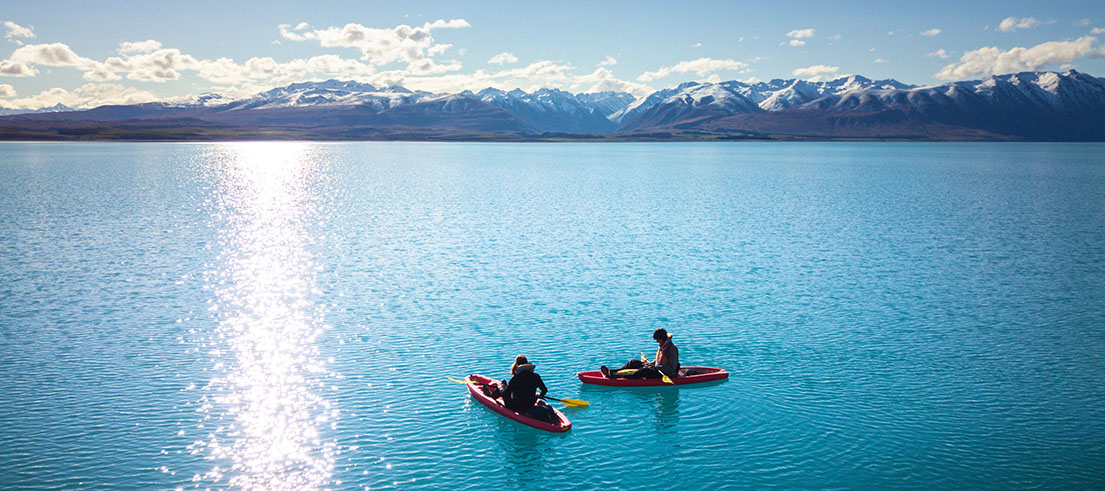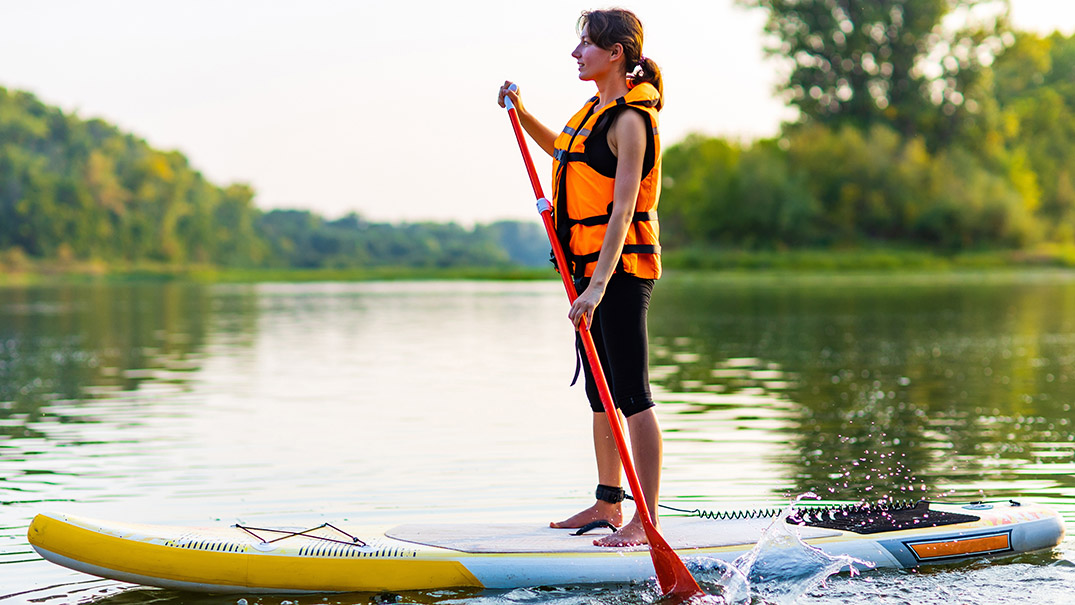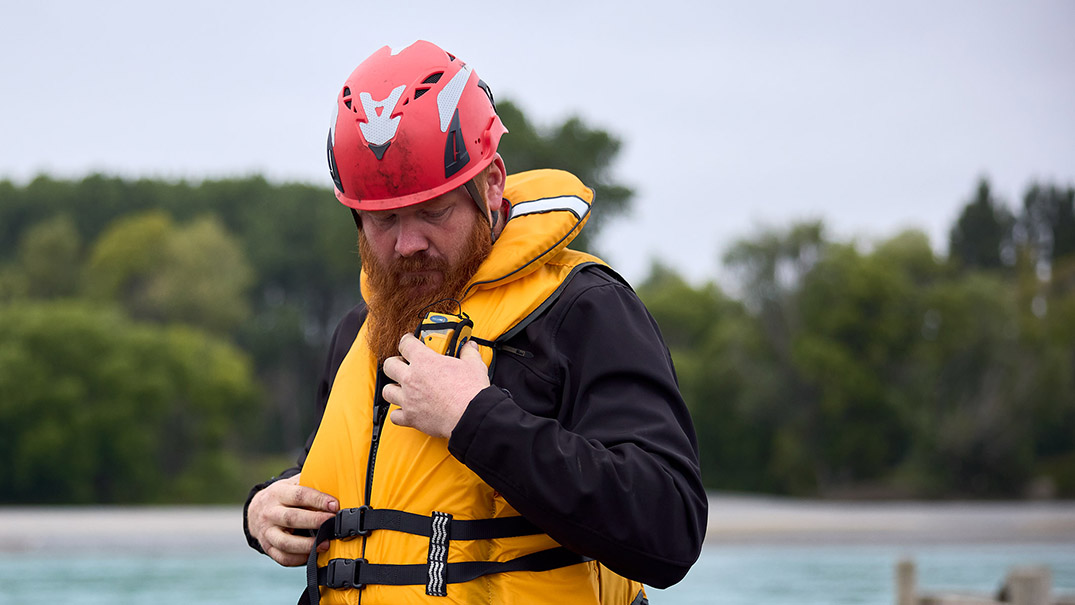
Stay safe on the lake this summer
Canterbury/Waitaha is home to over 400 lakes. Many, such as Lake Ruataniwha, Lake Takapō/Tekapo, and Lake Aviemore are popular with campers, travellers, and boaties. Beautiful spots to set sail on, but all boating comes with risks. Kia mataara: know the ways of the water, before you let go of the land.
Three biggest risk factors
The average person can only hold their breath for 30 to 90 seconds, cannot maintain a stable body temperature in cold water for long, and will tire very quickly, particularly if panic sets in. But if you are prepared, you can mitigate these factors.
Research shows that the three risk factors most likely to cause death and injury on the water are:
- the failure to wear lifejackets
- an inability to communicate when an accident happens
- failure to check forecasts to avoid boating in bad weather and lake conditions.
Wear a fitted lifejacket
Canterbury bylaw states that everyone onboard vessels under six metres (including kayaks and stand-up paddleboards) must always wear a lifejacket, even in calm conditions. You can still fall overboard, and it's not easy to put a lifejacket on once you're in the water!
On larger vessels, you need to make sure you have one suitable, fitted lifejacket for each person onboard. Everybody must wear their lifejacket if there are circumstances of increased risk to the safety of people aboard (for example, crossing a river bar or worsening weather).
Make sure your lifejacket is fit-for-purpose
Standards for lifejackets have moved on since the days of kapok-filled, cotton-strapped lifejackets. Replace any lifejackets that have a kapok-filling or cotton straps, as these materials are no longer recommended or safe.
Ideally, wear lifejackets with a collar, which enables rescuers to grab hold of you if you end up in the water.
Crotch straps are required on children’s lifejackets, but are also a good idea for adults, as they prevent the lifejacket from ‘riding up’ if you fall overboard.
Take two working, waterproof forms of communication
Ensure you have two forms of communication that work in the area. Cellphone reception can be unreliable, and VHF doesn't work well in inland lake areas such as Ruataniwha, Takapō/Tekapo, and Aviemore.
Alternatives to VHF radio in lake areas
Consider investing in a PLB (personal locator beacon) as your first choice of communication, as well as a secondary device such as a satellite communication device (like InReach and SPOT), flares, air horns, or torches.
"Many lake areas are remote, so let someone know your intentions, and what to do if you fail to check in by a certain time," Gordon says.
Check the forecast before you go
Pay attention to your environment and be sure to check the high country forecast for the area you’re boating in, the rural forecast, as well as the general weather forecast. Be prepared for the possibility that conditions may change quickly; they often do.
If there's a storm looming, a nor’wester wind or the conditions are set to deteriorate, stay on land.
"We have officers working at the lakes all through the summer, conducting safety checks and ensuring people are acting in a safe manner. If you see our people at the boat ramp or on the water, come and say hi — we are always happy to help you with local knowledge and answer your boating safety questions," Gordon says.


